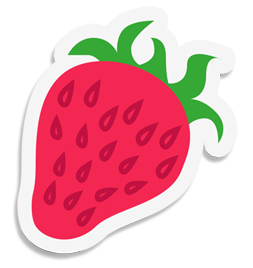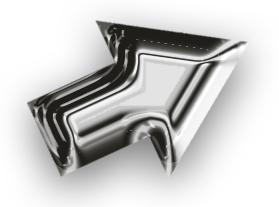|
Постгуманисты от искусства, арт-группа ZIP 17 декабря состоялась последняя в 2020 г. онлайн-встреча DOCA-talk, и гостем фестиваля современного искусства DOCA стала арт-группа ZIP. О создании и основных проектах группы рассказал один из ее участников – художник Степан Субботин. Арт-группа ZIP была создана молодыми художниками в 2009 г. в Краснодаре. За время своего существования группа стала учредителем Краснодарского института современного искусства (KICA), соучредителем Краснодарского центра современного искусства «Типография», независимого фестиваля стрит-арта «Может», а также арт-резиденции «Пятихатки». В основе названия группы аббревиатура Краснодарского завода измерительных приборов (ЗИП), где до 2015 г. располагалась ее мастерская. В своих работах участники ZIP обращаются к темам труда, сообщества и самоорганизации, превращая свои инсталляции в утопические пространства для работы, отдыха и взаимодействия. Первая часть встречи была посвящена проектам, связанным с городом Краснодаром, в котором работают художники, и с заводом (ЗИП), давшим название группе. А также теме «самоорганизации», на которой и была выстроена основная концепция существования группы. Во второй же части были представлены основные проекты художников. На момент первых выставок в составе группы было 6 человек. Во взаимодействии друг с другом и родилась основная тема группы – коллективности, совместного труда. На базе мастерской, устроенной в гигантском пространстве площадей завода, появилась идея создания первого института современного искусства в Краснодаре – КИСИ. Так возникла самоорганизованная независимая институция, созданная самими художниками. По словам Степана, это позволило сделать выставочным пространством весь мир. Необходимость коммуникации со зрителем превращает проект в образовательный. Ребята сами читают лекции, приглашают художников и организуют выставки. Так концепция самоорганизации ложится в основу существования арт-объединения ZIP и формирует его дальнейшее развитие. Вскоре мастерская расширилась, появился фестиваль уличного современного искусства «Может». Первый проект фестиваля был виртуальным, все последующие – уже офлайн. Местом творчества могло быть любое пространство, площадками фестиваля становились квартиры, парки, набережные. А среди участников можно было встретить даже переквалифицировавшегося милиционера. Проект арт-дачи «Пятихатки» представляет собой воплощение еще одной важной идеи для группы – о социально значимом искусстве. Настоящая родительская дача на Черном море одного из участников группы служит резиденцией художников со всего мира. Местом социального взаимодействия художника и зрителя становится и городской пляж, и пешеходный переход к морю, и продуктовая лавка. Исследование влияния искусства на социальную и политическую жизнь – не единственная сфера, которая интересна участникам объединения. Группа постоянно ищет способы расширения сферы вовлечения искусства в жизнь: пятнадцатиминутная «Биеннале» как ирония над значимостью названий и ярлыков, совместные проекты с объединением «Цех», проект в коллаборации с ученым-астрофизиком, проект «Завод Утопия» – проект-мечта о создании арт-кластеров «для развития творческой энергии в пространствах старых заброшенных заводов», «Протестная Аэробика» на Уральской биеннале и многие другие работы – каждый раз новая сфера, в которой искусство – логичная его часть. Проект, которым увлечены художники сегодня, обращен к способности «мыслить свободно, а иногда утопично о нереальном, возможно, фантастическом, но желанном». Проект «Технокрестьяне» – постгуманистический проект, призывающий к отказу от потребительского отношения к животному миру. Проект про поиск баланса технологий и природы и их «равных ритмов взаимодействия». Художники первыми чутко улавливают тенденции и изменения как в создании местных институций и фестивалей, так и во внедрении искусства в естественный поток обычной жизни. Пресс-секретарь Баранова Ольга
|
ZIP Art Group, Posthumanists in Art The last online DOCA-talk of the year 2020 took place on December 17. The ZIP art group became the guests of the Days of Contemporary Art (DOCA) festival. Stepan Subbotin, one of the members of the ZIP, told about the creation and the main projects of the group. The ZIP art group was created by young artists in Krasnodar in 2009. Since its establishment, the group has founded the Krasnodar Institute of Contemporary Art (KICA). The ZIP also co-founded the ‘Typography’ Krasnodar Contemporary Art Centre, the Maybe independent street art festival, and the Pyatihatki art residence. The group’s name is based on the Russian abbreviation of the Krasnodar Measuring Instrumentation Factory (ZIP). That was the place of the studio of the group until 2015. In their works, the ZIP group members refer to the topics of labour, community, and self-organisation turning their installations into utopian spaces for work, rest, and interaction. The first part of the meeting was dedicated to the projects within the city of Krasnodar where the artists work jointly with the ZIP factory that inspired the art group’s name. The meeting also touched upon the topic of self-organisation, on which the basic concept of the existence of the group was built. During the second part of the meeting, artists presented their main projects. There were 6 ZIP members at the time of the group’s first exhibitions. The main topic of the group, which is collectivity and joint work, appeared in the process of interaction with one another. The idea of the Krasnodar Institute of Contemporary Art (KICA) was born on the basis of the studio arranged in the gigantic space of the plant’s premises. That is how a self-organised independent institution created by the artists themselves emerged. According to Stepan Subbotin, this made it possible to make the whole world an exhibition space. The need to communicate with the viewer turns the project into an educational one. The ZIP members deliver lectures, invite artists, and organise exhibitions. This is how the concept of self-organisation serves as the backbone of the ZIP art group and shapes its further development. Soon the studio expands and the Maybe festival of contemporary street art appears. The first festival project was virtual and all subsequent ones were in the offline regime. Any space could become a venue for creativity. Thus, there were various places for the festival: flats, parks, and embankments. The participants were diverse as well and one could even meet a retrained policeman among them. The Pyatykhatki art dacha embodies another important idea of the group about socially significant art. The country house of ZIP member’s parents on the Black Sea serves as a residence for artists from all over the world. A beach, a crosswalk to the sea, and a grocery store become the places of social interaction between artists and viewers. Exploration of the impact of art on social and political life is not the only area of interest of the group members. The ZIP members are constantly looking for ways to expand the scope of the involvement of art in life. They include a fifteen-minute biennale as an irony over the significance of names and labels, joint projects with the Tsekh association, a project in collaboration with a scientist-astrophysicist, the Utopia Factory project, a dream project about creating art clusters designed “to develop creative energy in the spaces of old abandoned factories”, ‘Protest Aerobics’ at the Ural Biennale, and many other works. Each time, the group chooses a new sphere, in which art is a logical part of it. The project actively developed by the artists today appeals to the ability to “think freely, and sometimes idealistically about the unreal and, perhaps, something fantastic but desirable”. The Technopeasants project is a posthumanist project calling for the rejection of consumerism in relation to the animal world. The project is about finding a balance between technology and nature, and their ‘synchronized rhythms of interaction’. Artists are the first to sense new trends and changes in terms of both the creation of local institutions and festivals and the introduction of art into the natural flow of ordinary life. Olga Baranova DOCA Press Secretary
Translated by Nikolay Gavrilov
|
 2020
2020


























































































